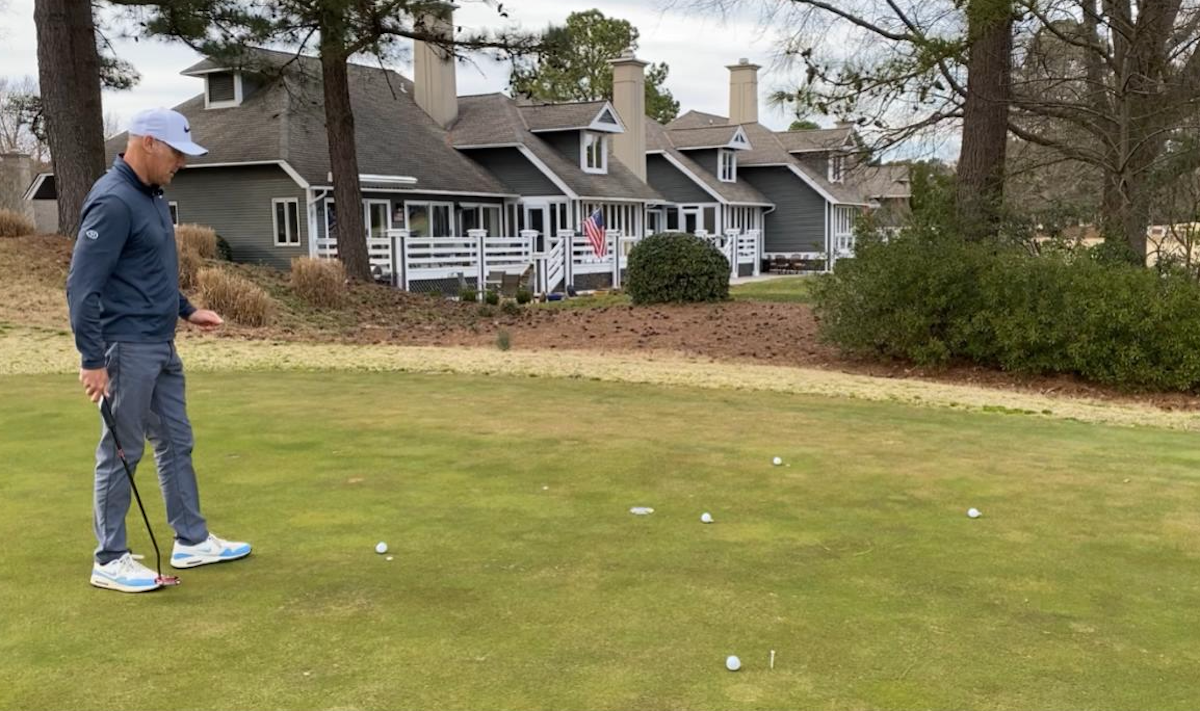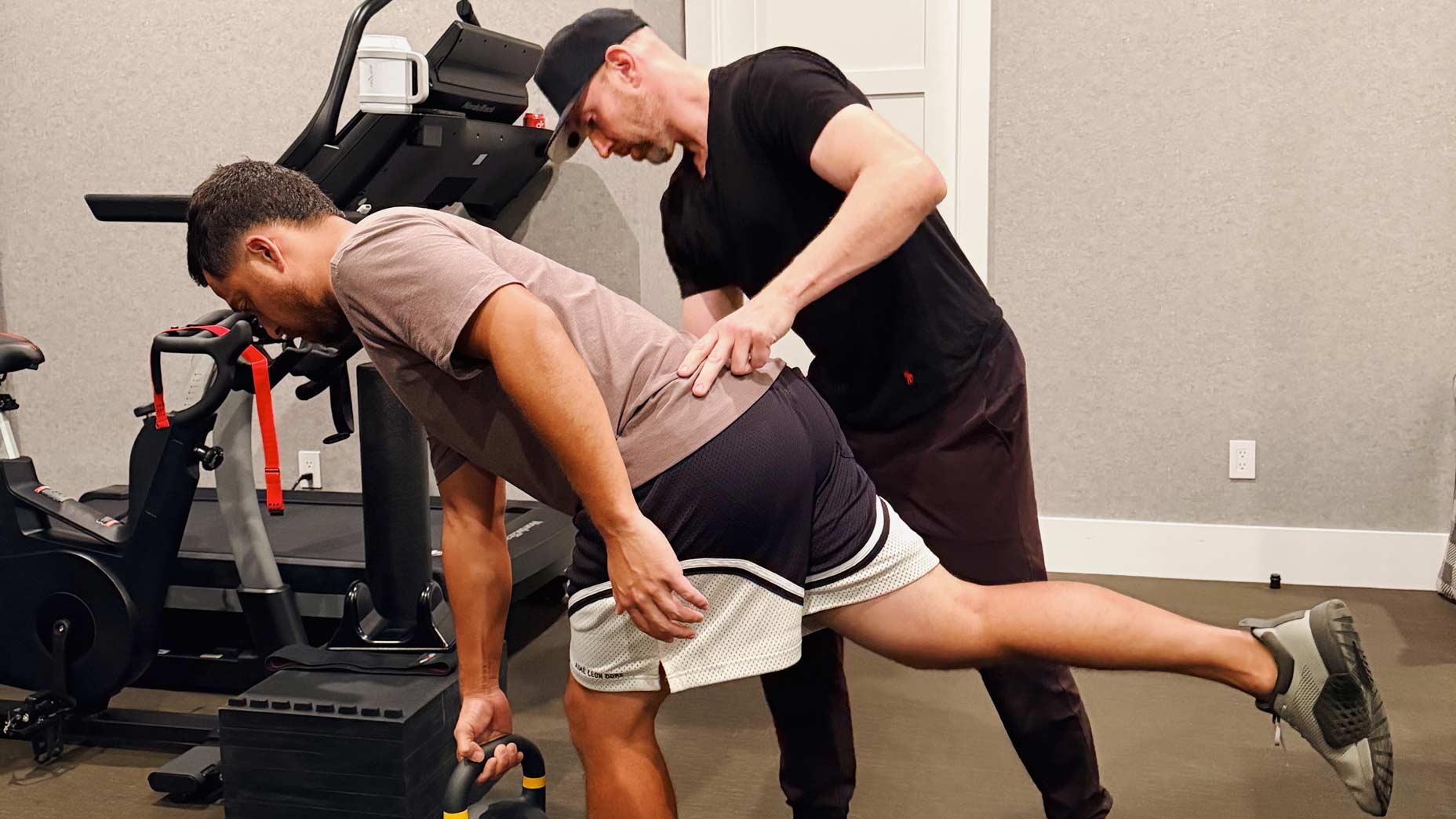Welcome to Shaving Strokes, a new GOLF.com series in which we’re sharing improvements, learnings and takeaways from amateur golfers just like you — including some of the speed bumps and challenges they faced along the way.
If you’re a mid-handicapper like I am, you probably sit around and wonder what it’s really going to take to lower your scores and keep them there.
Is it bombing your driver farther and hitting more fairways? Or how about having more precision on your approach shots? Maybe it’s the short game that needs the most attention, and you need to hone your chipping for easier putts.
The 3 biggest keys for hitting a fairway when you absolutely have toBy: Zephyr Melton
Whatever the case, I always find that data is helpful in revealing the answer.
For today’s Shaving Strokes lesson, GOLF Teacher to Watch Chris George shares information on the differences in Strokes Gained: Putting among handicap levels — and the narrow gap between total putts per round may come as a surprise.
So check out below to see what George’s data has to say, and then use it to your advantage on your way to shaving strokes off your game!
The differences in Strokes Gained: Putting among handicap levels
A mere eight putts per round! That’s all that separates a player that averages 94+ versus a player who regularly shoots around 70 each round.
Is that surprising to you? Probably, because so many mid- to high-handicappers struggle with 3-putt avoidance, which adds frustrating strokes to their scorecards. Meanwhile, lower handicappers typically roll the ball with precision, and often make light work of anything within three feet.
The chart below further highlights the gap between Strokes Gained: Putting for different handicap levels.

While tracking the total number of putts is helpful for players to use during a given round, let’s dive into that number in more detail.
A better way to use this information is by tracking the total number of putts from key distances — inside 8 feet, between 9-20 feet and longer than 20 feet.
To really see improvements from those areas, I suggest allocating more practice time to putting, which many mid- to high-handicappers just don’t do.
In my opinion, every player should set aside an hour with their flatsticks during practice, with 38 minutes being spent on putts within 8 feet, 14 minutes for 9- to 20-foot putts and just 8 minutes on anything longer than 20 feet.
For instance, players who regularly shoot 80 or lower excel in two main areas compared to other golfers: green-reading and putting distance control. This all comes from focusing on those areas during practice.
So how can you improve your Strokes Gained: Putting in order to shave more strokes? Using the ladder drill below is a good starting point.

1. Set up the drill
Find a slightly uphill put with a little break, and place a coin to mark your starting spot. Next, place your first disk 10 feet away from the cup, and then four additional disks two feet apart.
You should focus on four zones:
Zone 1: 10-12 feet
Zone 2: 12-14 feet
Zone 3: 14-16 feet
Zone 4: 16-18 feet

2. Practice your distance control
Now that you’ve set up the drill, it’s time to work on your distance control from your markers.
Hit 5 putts to each distance, making sure you keep score on how many balls stop in each zone. The goal is to get all 5 balls to stop in each zone. Once you successfully accomplish this, back up 5 feet and repeat.

3. Create the ideal practice environment
Once you’ve developed a baseline speed, you can now modify the ladder drill, which will help increase your ability for speed control.
For example, try hitting a 10-foot putt uphill and then a 10-footer downhill.
As you’ll notice, the amount of force required is different for both even though they’re traveling the same distance. This is why it’s vital to create a practice environment that challenges you to adapt your speed profile to the length of the putt and any slope characteristics.
I suggest placing 7 balls around the hole at random distances inside of 12 feet. Your goal is to make as many one-putts as you can, feeling the differences in how big or small your backstroke is.
Continuing to improve your speed control will allow you to convert more one-putts, leading to a higher percentage of makes from inside 8 feet. Speed drills should be practiced from each distance category, which will help ensure your command of the force it takes to travel your ball the desired distance.
So, what’s a good one-putt target for a round? I believe that five or six solid.
Good luck!












